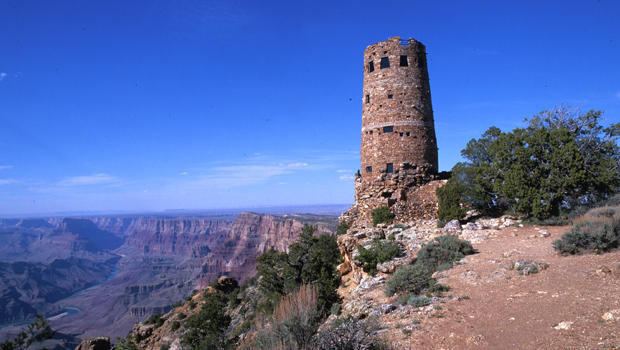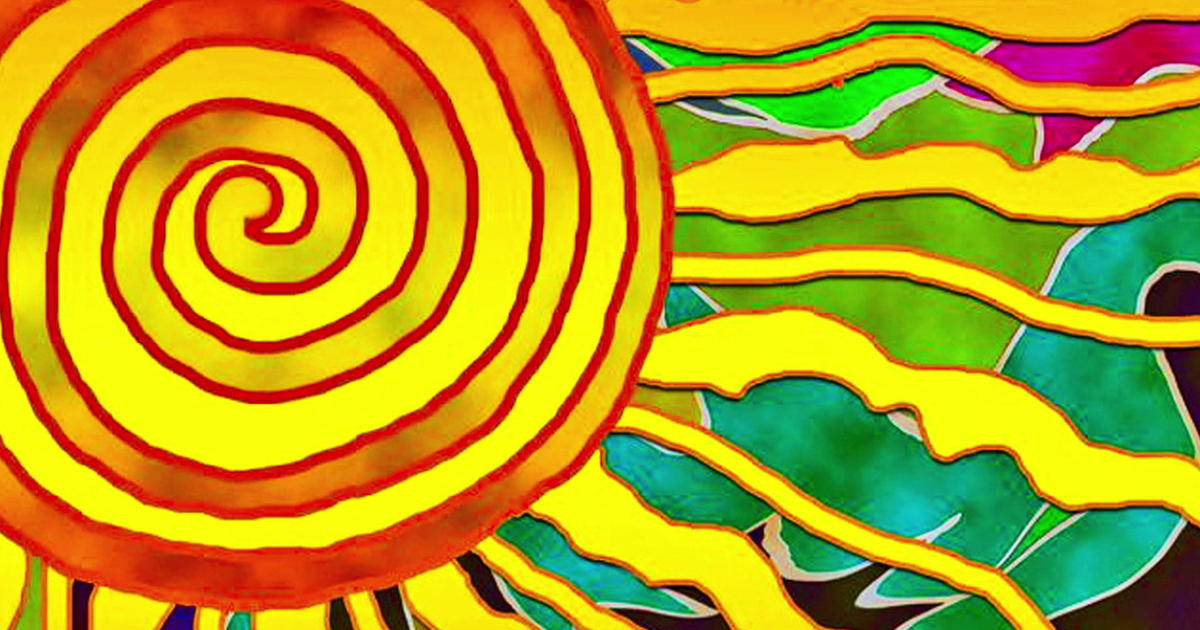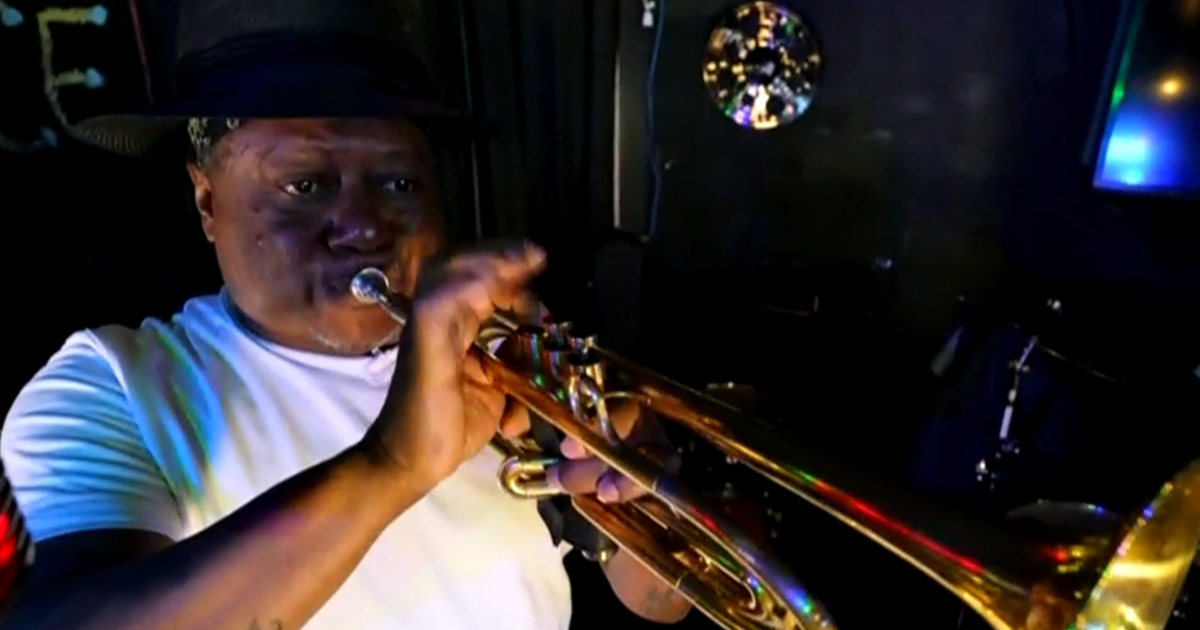On The Trail: The "Parkitecture" of Grand Canyon National Park
Conor Knighton is "On The Trail" through our National Parks once again, but sometimes the natural beauty isn't all there is to appreciate. Sometimes the "Parkitecture," as it's called, is just as moving:
Most of the 5.5 million visitors who pass through Grand Canyon National Park each year come for the views. And when they inevitably need a break from the majestic scenery, they head inside -- to shop for souvenirs, admire Native American art, and check into the lodge.
For Ranger Kristen Luetkemeier, the buildings of the Grand Canyon are just as grand as the vistas -- a stunning example of "Parkitecture."
Knighton asked, "If someone were to come to the Grand Canyon and just look OUT and maybe not turn around and look BACK, do you feel like they'd be missing out on some of the park experience?"
"I do," Ranger Luetkemeier replied. "I would feel sad for them. The opportunity to be in Grand Canyon Village, among the best collection of Mary Colter buildings in the world, was a real draw for me and something that I was really excited about."
Mary Colter was the visionary architect behind the Canyon's most recognizable buildings. Born in 1869, Colter was the child of Irish immigrants, and left home at 16 to study interior design in California.
She went on to work for the Fred Harvey Company, whose "Harvey House" hotels and restaurants were springing up throughout the Southwest. Colter learned on the job, and eventually secured her first assignment as an architect: to design the Hopi House.
Colter's Hopi House, built in 1905, was heavily influenced by her time spent roaming the Southwest, drawing on ancient Native American structures for inspiration. It's at once completely fake, and surprisingly authentic.
The Hopi House was designed so that native artisans could live and work on-site. All told, it was pretty ambitious for a gift shop.
"These buildings were built to lure tourists to the Grand Canyon; that's what they were for," said Bruce Brossman, the director of sales and marketing for Xanterra, the company that runs Hopi House today. "They were marketing tools. Mary Colter just happened to be a genius and create them, and they were interesting from Day One.
"I view these buildings as art, visual art on the Grand Canyon, rather then just buildings or as gift shops."
Colter's buildings, like Lookout Studio and Hermit's Rest, are still used to sell souvenirs. But when Colter designed them, she was also selling a story.
"She developed a backstory that a hermit actually lived there, and that when people visited, that they had just missed the hermit," Brossman said. "Like, he could have just left to go mining or whatever he might be doing. She pre-sooted the ceiling there to make it look like there had been a fire for years and years and years and years."
Inside the Bright Angel Lodge, Colter created a massive fireplace out of layers of rock found at each layer of the canyon to tell the story of geologic time.
"She had everything from river rocks to the vishnu schist or the very hard granite at the bottom of the Grand Canyon, to each of the sedimentary layers as you go up to limestone at the top," Brossman said.
In Colter's days, you weren't likely to catch her chatting by the fire. A chain smoker fond of Stetson hats, Colter was notoriously prickly. Brossman said, "She left for a couple of weeks, and one of her foremen wanted to impress her by building another layer or two. So she came back and he said, 'Look, Mary, what I've done." And her response was, 'Take it all down.' So she had to be tough, I think, in those days to really compete in a man's world.
Colter was one of just a handful of female architects working in the United States. And since she was working for the Fred Harvey Company, her designs were never really hers.
"She was just an employee," said Brossman. "She put all her effort into her work rather than becoming famous."
Today, Colter has finally gained some recognition. Her Desert Watchtower, rising out of the South Rim of the Canyon, is seen as a masterpiece.
"Mary Colter wanted to design a building that would both blend in with its setting physically and culturally, and also provide a good observation point for visitors to the Grand Canyon," said Ranger Luetkemeier.
Colter's designs contributed to an architectural movement: National Park Rustic, a style on display at parks across the country.
Colter wasn't trying to compete with Nature; with her, it was always the setting, never the structure, that was meant to be the star.
For more info:
Also visited by Knighton while "On The Trail":
- A year "On The Trail"
- Great Smoky Mountains National Park, North Carolina
- Great Basin National Park, Nevada
- Hawai'i Volcanoes National Park, Hawai'i
- National Park of American Samoa
- Glacier National Park, Montana and Kenai Fjords National Park, Alaska
- Crater Lake National Park, Oregon
- Denali National Park, Alaska
- Mesa Verde National Park, Colorado
- Joshua Tree National Park, California
- Death Valley National Park, California-Nevada
- Virgin Islands National Park, U.S. Virgin Islands
- Shenandoah National Park, Virginia, and Mount Rainier National Park, Washington
- Great Sand Dunes National Park, Colorado
- Zion National Park, Utah
- Petrified Forest National Park, Arizona
- Biscayne National Park, Florida
- Big Bend National Park, Texas
- Everglades National Park, Florida
- Hot Springs National Park, Arkansas
- Acadia National Park, Maine
- Mammoth Cave National Park, Kentucky




